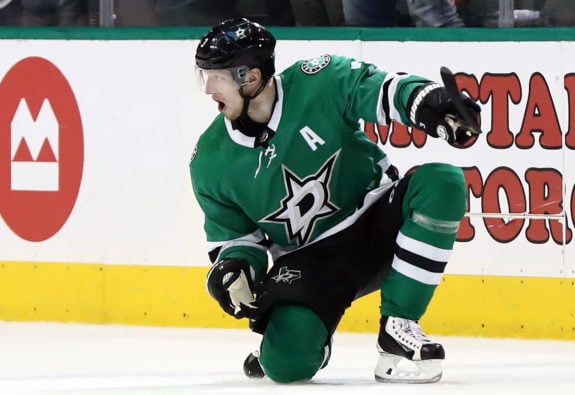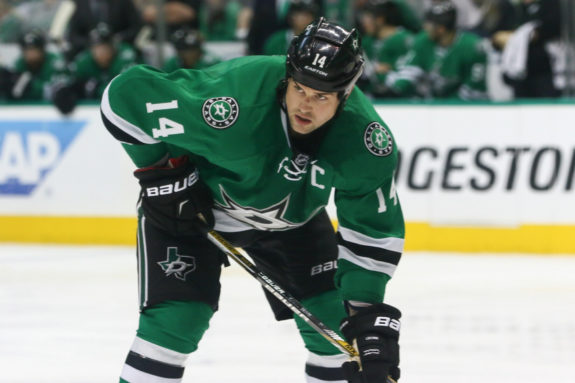Drafting in the NHL is harder than ever before; 2019 is no exception. After losing out of the second round of the playoffs to the St. Louis Blues, the Dallas Stars will look to retool and add to their high-powered roster through drafting and free agency. The biggest question lies ahead: what should the Dallas Stars do in the 2019 draft?
Related: THW’s 2019 NHL Draft Guide
Should general manager Jim Nill focus on forwards, or double down on defense? With only four picks at their disposal this year, 2019’s draft year for the Stars could be boom or bust. They have a variety of strategies they can deploy, but finding the perfect fit for the roster should be Dallas’ biggest priority. Today, we’ll be looking at three draft strategies for the Dallas Stars to see how they could change the Stars from good to great.
The Best Player Available
Pros: It’s hard to go wrong when you go BPA. Playing it safe can net you a solid player or the chance for someone average to become excellent. This seems like the smartest strategy for Nill, as he’ll need to show results with his drafting if he wants to keep his job. While the Stars currently rock a strong prospect pool with Dennis Gurianov, Ty Dellandrea, and Jason Robertson, they’ll need to add as much as they can to better increase their chances of defense.

Notable Names: Ryan Suzuki ( C ), Arthur Kaliyev (RW), Alex Newhook ( C )
Cons: Playing it safe also runs a risk of mediocrity. The Stars haven’t had the best of odds in the first round, with players like Val Nichushkin and Julius Honka failing to pan out as intended. Their inconsistency, coupled with the Stars’ lack of a solid first rounder in years (besides Miro Heiskanen) brings with it a bit of anxiety. Picking BPA might seem like a surefire bet, but it also has a chance to backfire in fans’ faces.
A Right-Handed Defenseman
Pros: The Stars have left-handed defensemen on lock. Esa Lindell, Heiskanen, and Jamie Oleksiak seem to have the left side covered, but with the potential departures of Ben Lovejoy and Roman Polak this offseason, John Klingberg will be the Stars’ only right-handed defenseman on the blue line. Drafting a high-powered right-shot defenseman that’s ready to make an impact could skyrocket the roster to contention. All they need is the right fit.

Notable Names: Victor Soderstrom, Moritz Seider, Lassi Thomson
Cons: Right-shot defensemen are a rare breed this year. The Stars may be able to score players like Lassi Thomson in later rounds, but drafting is a crapshoot after the first round. While the Stars have found a lot of success with drafting defensemen in later rounds (Lindell and Klingberg come to mind), he’ll need to pull out all the stops to ensure he lands a steal of a blueliner that will pan out while their window is still open.
A High-Risk, High-Reward Player
Pros: These players, typically referred to as “project players” come with a lot of risks, but, if they’re able to pan out, can shine as superstars across the NHL. Players like the Stars’ own Jamie Benn can shine when the pressure’s off as they develop their own manner of playing. Usually, these players are taken in the later rounds, but Nill has been known to surprise like he did when he selected Dellandrea last year over a player like Joe Veleno.

Notable Players: Anttoni Honka (D), Brett Leason (RW), Joseph Garreffa (RW/LW/D)
Cons: The risk with picking a late-bloomer or a project player is that it could easily fall apart. It’s hard enough for a top 10 player to crack it in today’s NHL, and it’s even harder to stack up against the top talent and still prove your draft ranking wrong. Nill’s safest bet is to save a project player pick for later in the draft. In the most ideal scenario, he drafts the best player available at 19, then a few defensemen with the fourth and fifth picks, before ending with a project on the sixth.
What do you think? Should Jim Nill and the Stars play it safe, or swing for the fences? Let us know below!